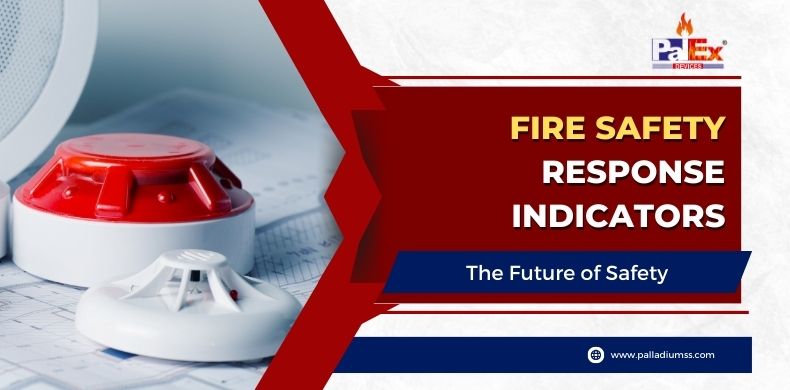In today’s fast-paced world, the safety of our homes, workplaces, and public spaces remains a top priority. Fires pose a significant threat among various potential hazards, often resulting in devastating consequences.
Technological advancements and data-driven approaches, fire safety response indicators are emerging as a game-changer in our quest to mitigate fire risks and enhance emergency response efforts.
This blog delves into the concept of Fire Safety Response Indicators. It explores how they are shaping the future of safety.
Understanding Fire Safety Response Indicators
Fire Safety Response Indicators are advanced systems created to watch, analyze, and predict possible fire dangers instantly. These indicators use high-tech technologies like –
1. Artificial intelligence
2. Machine learning
The Internet of Things
Data analytics gather and handle vast amounts of information from different sources.
This information includes temperature, smoke density, gas levels, occupancy, and people’s behaviour.
Key Benefits and Features
1. Early Fire Detection: Traditional fire alarm systems often use smoke or heat detectors to identify fires. Fire Safety Response Indicators go beyond these conventional methods by utilizing sophisticated sensors and algorithms to detect anomalies, even before visible fire signs emerge.
This early detection significantly reduces response times, giving occupants more time to evacuate safely and firefighters a head start in controlling the blaze.
2. Predictive Analytics: One of the most exciting aspects of Fire Safety Response Indicators is their ability to analyze historical data and predict potential fire hazards.
By identifying patterns and trends, these systems can assess risks more accurately and proactively implement preventive measures.
3. Real-time Monitoring and Alerts: Fire Safety Response Indicators provide real-time monitoring of crucial parameters.
In case of any abnormality or potential fire hazard, these systems trigger immediate alerts to relevant authorities and building occupants, allowing for swift action.4. Integration with Building Management Systems: These indicators can seamlessly integrate with building management systems, enabling automatic responses such as closing fire-rated doors, activating fire suppression systems, and controlling elevators for safe evacuation.
5. Remote Monitoring and Control: Fire safety professionals and building managers can access the data and control the system remotely through secure online interfaces, ensuring continuous oversight even when physically distant.
The Impact on Fire Safety
Implementing Fire Safety Response Indicators has the potential to revolutionize fire safety practices.
Key ways in which they are transforming the landscape of fire safety:
1. Enhanced Emergency Response: These indicators’ real-time data and predictive capabilities empower emergency responders to make more informed decisions.
This, in turn, increases the effectiveness of firefighting efforts, ultimately saving lives and minimizing property damage.
2. Improved Evacuation Strategies: With early fire detection and prompt alerts, occupants can evacuate quickly and efficiently, avoiding panic and congestion that might hinder safe evacuation.
Fire Safety Response Indicators help create well-structured and adaptive evacuation plans tailored to each building’s unique characteristics.
3. Reduced False Alarms: Traditional fire alarm systems are susceptible to false alarms triggered by cooking smoke or other benign activities.
Fire Safety Response Indicators are designed to distinguish genuine fire threats from non-emergency situations, significantly reducing false alarms and preventing unnecessary disruptions.
4. Data-Driven Safety Assessments: These indicators facilitate comprehensive safety assessments by continuously gathering data on fire incidents and responses.
Identifying areas of vulnerability, recurring issues, and the effectiveness of safety measures allows for continuous improvement in fire safety protocols.
5. Integration with Smart Cities: As cities become more intelligent, Fire Safety Response Indicators can be integrated into larger innovative city frameworks.
This ensures a more connected and cohesive emergency response system, enabling department collaboration during crises.
Also read :10 Essential Fire Safety Tips For The Entertainment Industry
Conclusion
Conclusion
Fire Safety Response Indicators are a big step ahead in fire safety technology. They provide a comprehensive approach to reducing fire risks and improving emergency response.
By detecting fires early, using predictive analytics, and monitoring in real-time, these systems are shaping the future of safety.
Embracing these advanced solutions brings us closer to a world with fewer fire-related disasters and better-prepared communities in emergencies. Integrating Fire Safety Response Indicators with intelligent city initiatives ensures a safer and more resilient urban environment for future generations.



